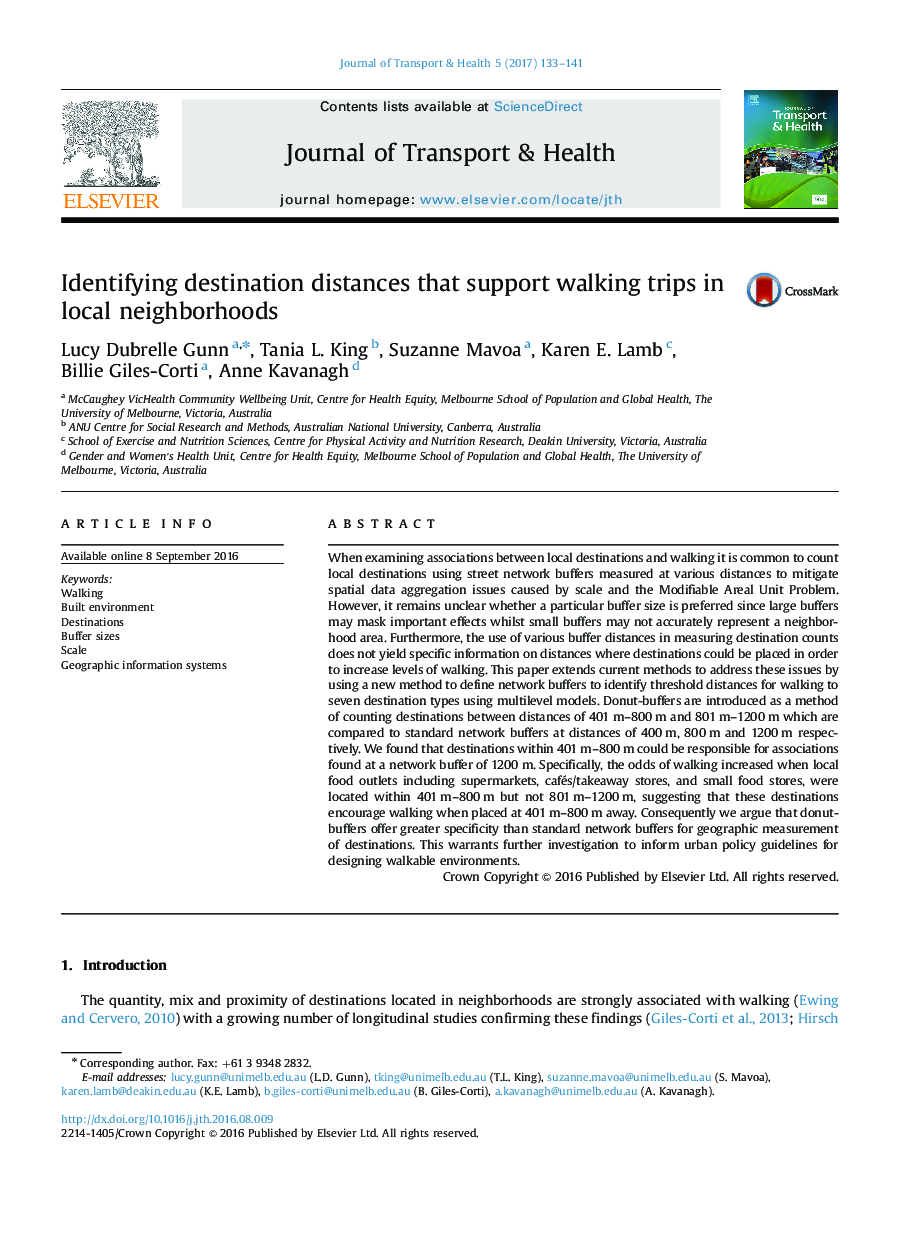| کد مقاله | کد نشریه | سال انتشار | مقاله انگلیسی | نسخه تمام متن |
|---|---|---|---|---|
| 5117842 | 1485456 | 2017 | 9 صفحه PDF | دانلود رایگان |
- Network buffers subsume destinations at smaller network buffer distances.
- 401Â m-800Â m and 801Â m-1200Â m donut-buffers count destinations with greater specificity.
- Destinations within 401Â m-800Â m could be responsible for associations with walking found at 1200Â m.
- Having a variety of types of destinations may increase walking trips.
- Donut-buffers warrant further investigation to inform urban planning policy guidelines.
When examining associations between local destinations and walking it is common to count local destinations using street network buffers measured at various distances to mitigate spatial data aggregation issues caused by scale and the Modifiable Areal Unit Problem. However, it remains unclear whether a particular buffer size is preferred since large buffers may mask important effects whilst small buffers may not accurately represent a neighborhood area. Furthermore, the use of various buffer distances in measuring destination counts does not yield specific information on distances where destinations could be placed in order to increase levels of walking. This paper extends current methods to address these issues by using a new method to define network buffers to identify threshold distances for walking to seven destination types using multilevel models. Donut-buffers are introduced as a method of counting destinations between distances of 401Â m-800Â m and 801Â m-1200Â m which are compared to standard network buffers at distances of 400Â m, 800Â m and 1200Â m respectively. We found that destinations within 401Â m-800Â m could be responsible for associations found at a network buffer of 1200Â m. Specifically, the odds of walking increased when local food outlets including supermarkets, cafés/takeaway stores, and small food stores, were located within 401Â m-800Â m but not 801Â m-1200Â m, suggesting that these destinations encourage walking when placed at 401Â m-800Â m away. Consequently we argue that donut-buffers offer greater specificity than standard network buffers for geographic measurement of destinations. This warrants further investigation to inform urban policy guidelines for designing walkable environments.
Journal: Journal of Transport & Health - Volume 5, June 2017, Pages 133-141
